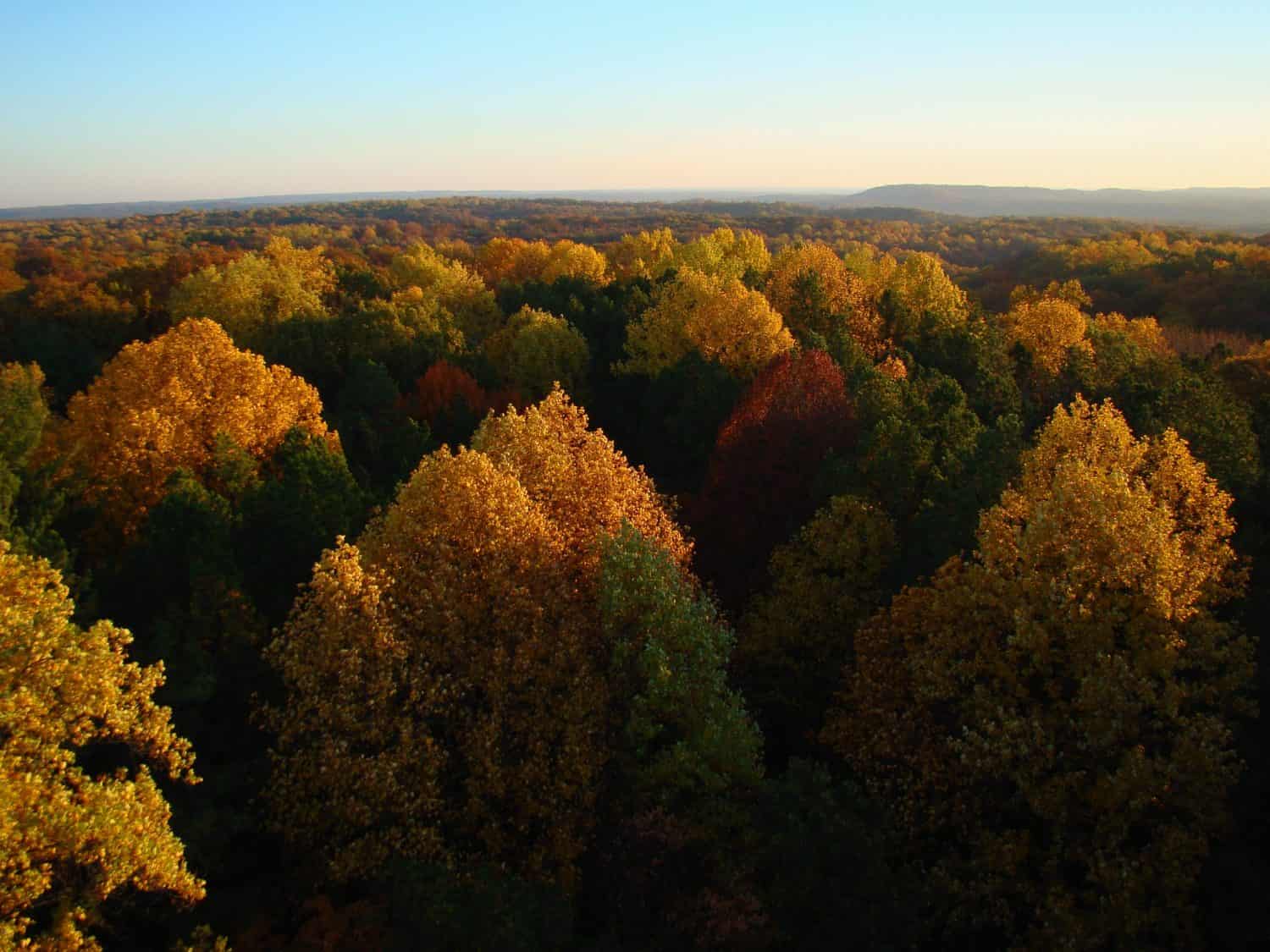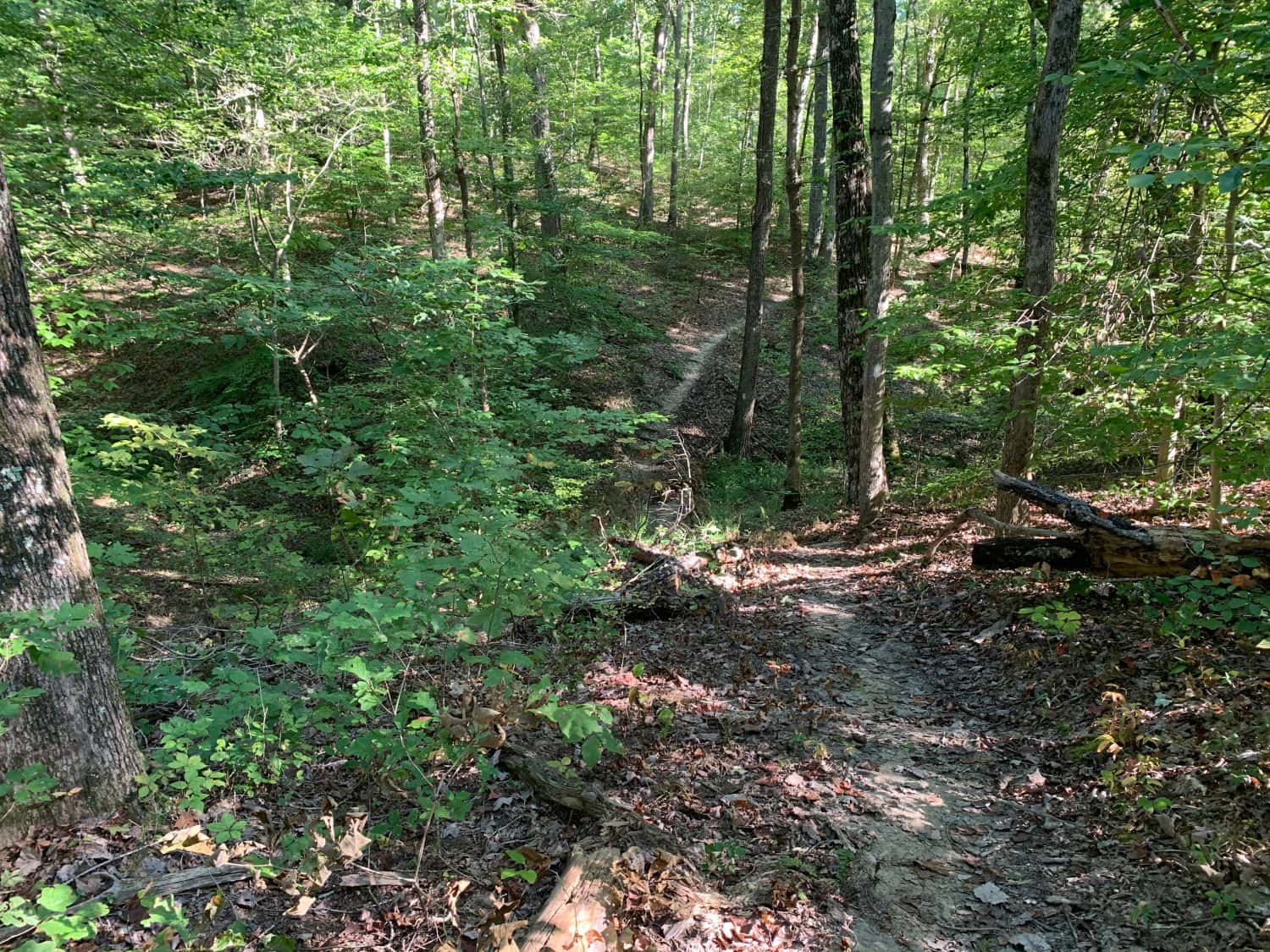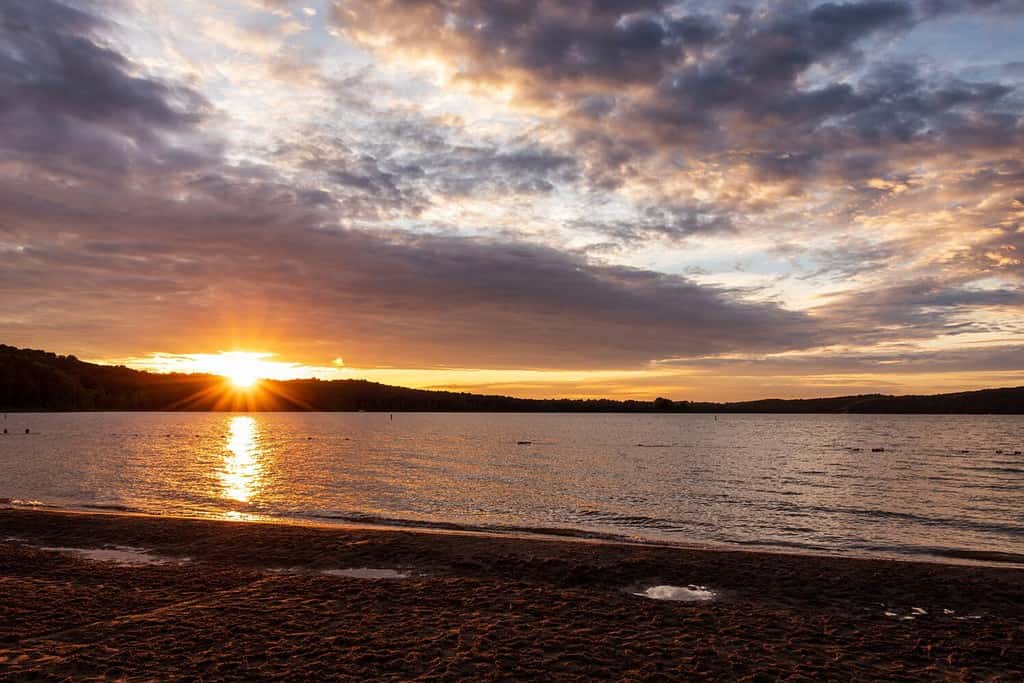With nearly 7 million residents, the U.S. State of Indiana isn’t quite home to vast expanses of empty landscapes. There’s usually a mixture of small communities that range all the way up to large cities that checker the countryside. However, if travelers are willing to trek for a bit, there are still out-of-the-way places still to be found in Indiana. Join us as we explore these distant spots and their unique charms!
#3 Charles C. Deam Wilderness

The Charles C. Deam Wilderness was established as a nature preserve in 1982.
©Tom Skirvin/Shutterstock.com
With 12,953 acres of natural beauty in the Hoosier National Forest, this pocket of dazzling scenery is not to be missed. The Charles C. Deam Wilderness Area features an expansive 36 miles of lush scenery, with occasional outlooks towards the majestic Monroe Lake. The immense accompanying body of water happens to be Indiana’s largest reservoir, which covers a stunning 10,750 acres.
Hikers can look forward to seeing native flora, including bloodroot and hyacinth, all within the setting of verdant hardwood foliage. Although the historical old-growth forests in this region were depleted in the late 17th century, conservation efforts have restored them. Diverse Indianan wildlife can be seen here, with vibrant examples being the cardinal and white-tail deer.
One notable and quaint point of interest within this region is the Hickory Ridge Lookout Tower, a fire watch structure built in 1936. Originally part of a system that included eight towers, this single lookout is the only remaining one. Interestingly enough, visitors can look forward to climbing this piece of history, but extreme caution is advised!
To reach this stretch of wilderness, eager travelers will need to arrive via Tower Ridge Road or Hunter’s Creek Road. These two serve as entrances to the park, with the former offering Brooks Cabin, which offers information on the area itself.
#2 Knobstone Trail

The Knobstone Trail passes through the Clark State and Jackson-Washington State Forests.
©T. E. Lewis/Shutterstock.com
Offering a staggering 60 miles of hiking trails, this hidden gem could easily be Indiana’s best-kept secret regarding nature experiences. In fact, the Knobstone Trail is the longest network of trails available within the state. Backpackers will need to understand that due to the type of terrain found along the way. In fact, this trail is so challenging it’s commonly seen as a training ground for the Appalachian Trail.
This extended nature walk is located within the Deam Lake State Recreation Area, a well-equipped park with plenty of outdoor activities. Local flora, such as wild geraniums and tulip trees, decorate the landscape, found between expanses of oak and walnut trees. Also, a variety of mushrooms can be observed seasonally, as well. Fauna-spotting enthusiasts can look forward to seeing red foxes, raccoons, and woodpeckers.
An interesting fact about the rugged region the Knobstone Trail traverses is that it’s technically the roughest terrain in the state. Geology of this sort is known as an escarpment, which means there are many naturally occurring steep inclines and deep ravines.
Visitors are encouraged to first arrive at one of two connected parks to experience this unique tour through the wilds of Indiana. On the north side, Delaney Park offers a fully furnished campground, along with fantastic fishing opportunities. Alternatively, the southern side has the Deam Lake trailhead, which has similar amenities in addition to boating facilities. Finally, six other trailheads also exist: Spurgeon Head, Oxley Memorial, Leota, New Chapel, Pixley Knob Road, and Jackson Road. All in all, aspiring hikers won’t be disappointed.
#1 Patoka Lake

Patoka Lake was created after a dam was constructed along the Patoka River.
©Andrew de Bie/Shutterstock.com
Nestled deep within the Hoosier National Forest, Patoka Lake and its surrounding nature zone covers an impressive 25,800 acres. As the most certainly isolated spot in Indiana, the lake offers both beautiful environments and serene remoteness.
This area is notable for its rare avian inhabitants, including bald eagles and red-tailed hawks. Also, those looking to learn more about the early history of the state should investigate the Jacob Moery Cabin. This peculiar building is an authentic artifact from 1865, which was since carefully relocated to the nearby visitor’s center.
Visitors who’d like to see this marvel for themselves should set out from Evansville in Indiana or Louisville in Kentucky. These are the largest nearby cities, and they open onto Interstate 64, a quick way to reach the lake. After a short trip along that highway, simply turn onto Indiana State Road 145. In no time at all, you’ll soon be surrounded by Lake Patoka!
Summary of Most Remote Spots in Indiana
| Rank | Location | Coordinates |
|---|---|---|
| 3 | Charles C. Deam Wilderness | 39°02′17″N 86°21′17″W |
| 2 | Knobstone Trail | 38°27′54″N 85°50′37″W |
| 1 | Patoka Lake | 38°26′05″N 086°42′25″W |
As always, plan ahead and stay safe when venturing out to remote areas. Also, if you’d like to camp in or out of the woods, make sure to contact the Indiana Department of Natural Resources. Their guidelines require visitors to register for any camping activities!
The photo featured at the top of this post is © David Arment/ via Getty Images
Thank you for reading! Have some feedback for us? Contact the AZ Animals editorial team.







